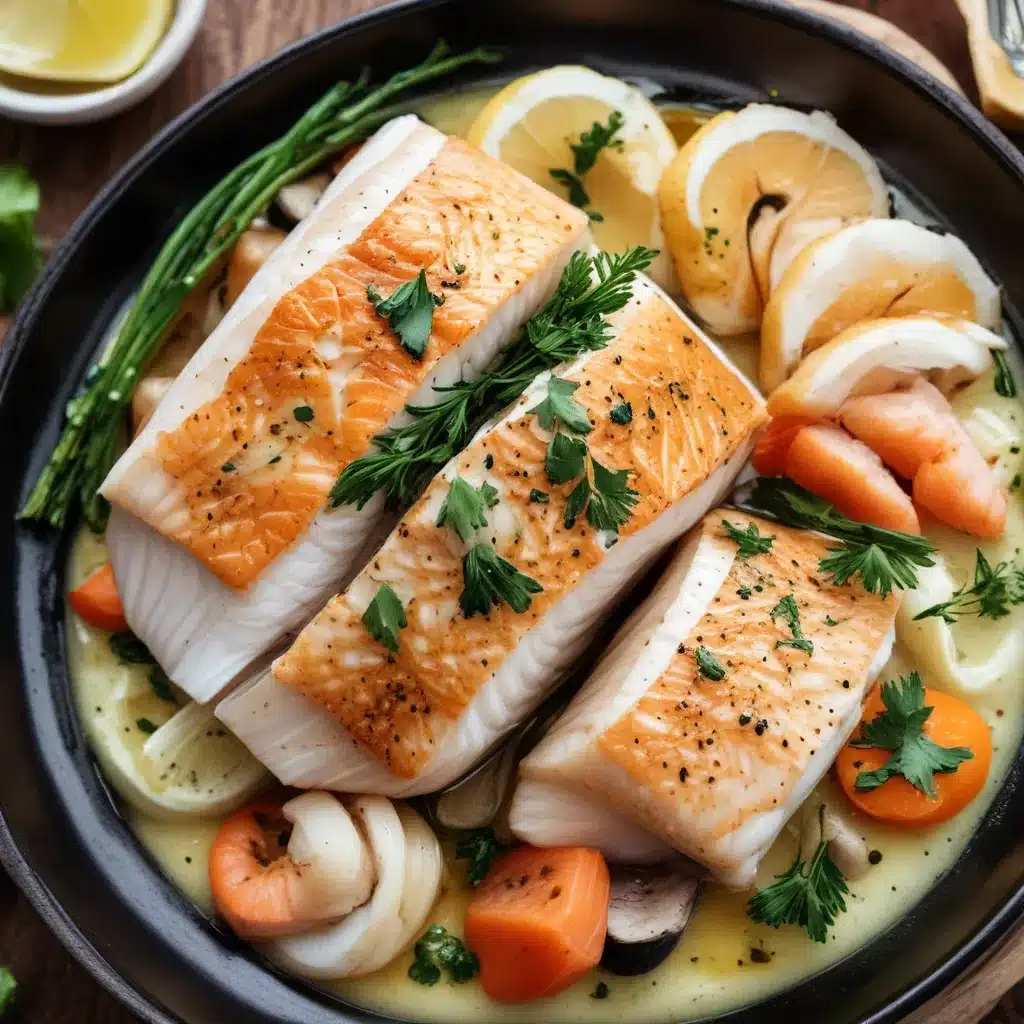
Cod, that humble yet versatile whitefish, has long been a cornerstone of regional cuisines across the globe. From the fish-centric diets of coastal communities to its integration into diverse culinary traditions, cod has proven to be a resilient and adaptable ingredient. As we explore the cod cuisine traditions worldwide, we uncover a tapestry of flavors, cooking methods, and sustainability practices that celebrate the riches of our shared oceans.
Culinary Diversity of Cod
The global appeal of cod lies in its remarkable versatility. Whether seared, baked, poached, or transformed into crispy fish and chips, cod‘s mild, flaky texture lends itself to a multitude of culinary applications. Its adaptability to various seasonings and sauces allows cooks to seamlessly integrate cod into their local flavor profiles, elevating regional dishes with a touch of ocean-kissed deliciousness.
Regional Cod Preparation Methods
Across cultures, we find cod prepared in unique and ingenious ways. In Scandinavia, the salted and dried klippfisk (or bacalao) is a beloved staple, while the Basques of Spain favor the bacalao al pil-pil, a dish that showcases the fish’s tenderness through a delicate emulsion of olive oil, garlic, and pepper. Farther south, the Portuguese embrace bacalhau, salt-cured cod that is the foundation for countless regional specialties.
Sustainable Cod Fishing Practices
As global demand for cod has risen, the fishing industry has faced the challenge of maintaining sustainable practices. Organizations like the Marine Stewardship Council have been at the forefront of promoting responsible harvesting, ensuring that future generations can continue to enjoy the bounty of the seas. Consumers can now make informed choices by seeking out cod bearing the MSC blue label, a testament to its environmentally-conscious origins.
Cod in European Cuisines
Traditional Cod Dishes in Scandinavia
In the Nordic nations, cod is revered for its ability to withstand the region’s harsh winters. Dishes like the Norwegian fårikål (tender cod and cabbage) and the Swedish jansson’s temptation (creamy cod gratin) showcase the ingredient’s remarkable adaptability to local flavors and seasonal produce.
Cod’s Role in Mediterranean Cooking
Across the Mediterranean, cod has found a home in the vibrant culinary traditions. The Spaniards delight in bacalao a la vizcaína, a stew of cod, bell peppers, and tomatoes, while the Italians transform baccalà into hearty fritters or creamy stews.
Cod’s Influence on British Isles Fare
In the British Isles, cod reigns supreme, most famously in the form of fish and chips. However, the versatile whitefish also stars in dishes like the Irish cod and potato cakes and the Scottish cullen skink, a rich and creamy cod and potato soup.
Cod in the Americas
Cod’s Prominence in New England Fare
The coastal regions of New England have long celebrated cod as a dietary staple. From the iconic Boston baked beans with salt pork and cod to the iconic cod chowder, this ingredient is woven into the very fabric of the region’s culinary heritage.
Cod’s Integration into Latin American Cuisines
Across Latin America, cod has found a warm welcome, blending seamlessly with local ingredients and techniques. In Peru, the classic cebiche de bacalao showcases the fish’s versatility in the country’s celebrated raw seafood dishes. Meanwhile, in Brazil, the bacalhau (salt-cured cod) is a cherished ingredient in numerous festive and everyday preparations.
Cod’s Adaptation in Indigenous Coastal Cultures
For centuries, indigenous coastal communities around the world have relied on cod as a cornerstone of their sustenance. From the salt cod stews of the Inuit in the Arctic to the cod fillets smoked and dried by the Māori in New Zealand, these time-honored traditions continue to shape local food cultures.
Cod in Asian and Pacific Cuisines
Cod in East Asian Culinary Traditions
In East Asia, cod has found a unique place within the region’s diverse culinary landscape. The Japanese celebrate shirasu-don, a bowl of steamed rice topped with tiny cod larvae, while the Chinese masterfully incorporate cod into soups, stir-fries, and steamed dishes.
Cod’s Adoption in South Asian Cooking
Farther south, the nations of the Indian subcontinent have also embraced cod as an integral part of their seafood-centric cuisines. In India, the Goan-style fried cod with its vibrant spices and tangy tamarind is a testament to the whitefish’s adaptability.
Cod’s Significance in Oceanic Island Cuisines
Across the vast expanse of the Pacific, island nations have long revered cod as a prized catch. From the lüffish (dried and smoked cod) of Guam to the ika mata (raw cod salad) of the Cook Islands, the embrace of this versatile fish speaks to the indelible link between coastal communities and the sea.
The Versatility of Cod
Cod’s Adaptability to Various Flavors
The true beauty of cod lies in its ability to seamlessly blend with a multitude of flavors, from the smoky char of the grill to the delicate perfume of lemon and herbs. This chameleon-like quality allows cooks around the world to showcase the riches of their local larder while elevating cod to new gastronomic heights.
Cod’s Nutritional and Sustainability Benefits
Beyond its culinary versatility, cod also boasts impressive nutritional credentials. As a lean, protein-rich whitefish, cod is an excellent source of essential vitamins and minerals, making it a popular choice for health-conscious consumers. Furthermore, the commitment to sustainable fishing practices ensures that this ocean treasure can be enjoyed for generations to come.
Cod’s Enduring Presence in Global Food Cultures
Whether in the form of salt-cured delicacies, flaky baked fillets, or crisp tempura-fried morsels, cod has proven to be a unifying force in global cuisine. Its ability to transcend geographic and cultural boundaries speaks to the innate human desire to connect with the bounty of the sea, forging culinary traditions that celebrate the diversity of our shared planet. As we continue to explore the world through the lens of cod, we uncover a tapestry of flavors, techniques, and sustainability practices that pay homage to the timeless allure of this cherished ingredient.

